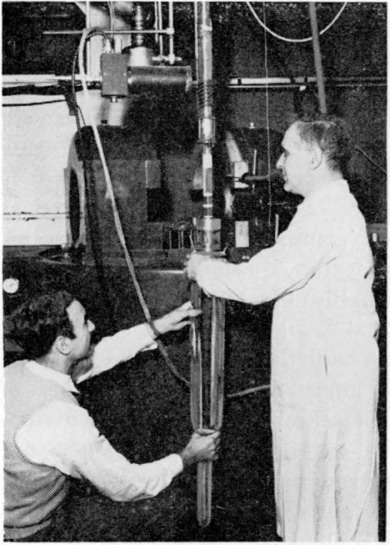
While most of us will ring in the new year with family and friends, science doesn’t take a holiday. And neither do the scientists responsible for big ongoing experiments. One of the more famous historical examples of this is the case of physicist Chien-Shiung Wu—often referred to as “Madame Wu”—who gave up vacationing with her husband in the 1950s to prove that nature is slightly left-handed.
Physicists had long thought that, when it comes to the laws of physics, nature has no preference when it comes to right over left. That means our world should be pretty much identical to its mirror image. It’s a form of symmetry. Mathematically, it’s known as parity, and it should be conserved in all subatomic processes. And it is, at least for electromagnetism and the strong nuclear force. Any number of experiments had shown that this was so.
But in 1956, two Chinese-born American theorists submitted a short paper to the Physical Review journal, questioning whether parity would be conserved in weak nuclear interactions. Tsung-Dao Lee and Chen-Ning Yang even had some ideas for how one could test their hypothesis experimentally, and convinced Wu—who specialized in weak interaction experiments at Columbia University—to work on the project.
Wu in turn partnered with physicists at what was then the National Bureau of Standards, in Washington, DC, since they had just the right facilities to make the necessary precision measurements. (It’s now known as the National Institute of Standards and Technology.)

The critical experiments were performed at the NBS between Christmas and New Year’s, 1956—mostly because Wu realized just how fundamentally important they were likely to be, and she wanted to beat everyone else to the punch.
Sponsored
She was supposed to accompany her husband to China; they had booked passage on the Queen Elizabeth and everything. Instead, she stayed behind to work on the experiments, and her husband went to China without her.
Wu and her colleagues used cobalt-60 atoms held in magnetic fields at very low temperatures. Cobalt-60 nuclei have an intrinsic spin—the quantum equivalent of angular momentum, kind of like a little spinning gyroscope, except it’s more a property of the particle, rather than an actual spin. They also emit beta particles as they decay. The idea was to use the magnetic fields to orient the nuclei so that all the spins were in the same direction, and then count how many electrons were emitted up and down as the nuclei decayed. If parity was conserved, there should be equal numbers of each.
To everyone’s surprise, there were not equal numbers of beta particles emitted in both directions. Nature, it seems, is “a semi-ambidextrous southpaw,” showing a slight preference for the left. Wu caught the last train back to New York on Christmas Eve—it had been snowing heavily and the airports were closed—to report her initial findings to Lee, telling him that “the observed symmetry was reproducible and huge.”
The fall of parity was such an important and exciting result, some physicists didn’t believe it at first. Wolfgang Pauli purportedly exclaimed, “That’s total nonsense!” when he heard about it. There was a rush to replicate the experiment, and those results confirmed beyond doubt that this really was a violation of parity conservation. Even Pauli was convinced.
Lee and Yang received the Nobel Prize in Physics the very next year. In what is widely perceived within the physics community as a gross injustice, Madame Wu was not included in the prize, even though it was her experimental expertise that helped proved Lee and Yang’s hypothesis to be correct.
She had a pretty stellar scientific career, nonetheless. And she definitely had a lot to celebrate as she rang in the New Year nearly 60 years ago.
References:
Lee, T.D. and Yang, C.N. (1956) “Question of parity conservation in weak interactions,” Physical Review 104(1): 254-258.
Wu, C.S. et al. (1957) “Experimental test of parity conservation in beta decay,” Physical Review 105(4): 1413-1415.
Images: (top) Acc. 90-105, Science Service, Records, 1920s-1970s, Smithsonian Institution Archives. (bottom): The 1956 Wu experiment. Credit: A.V. Austin/Bureau of Standards. Public domain.
